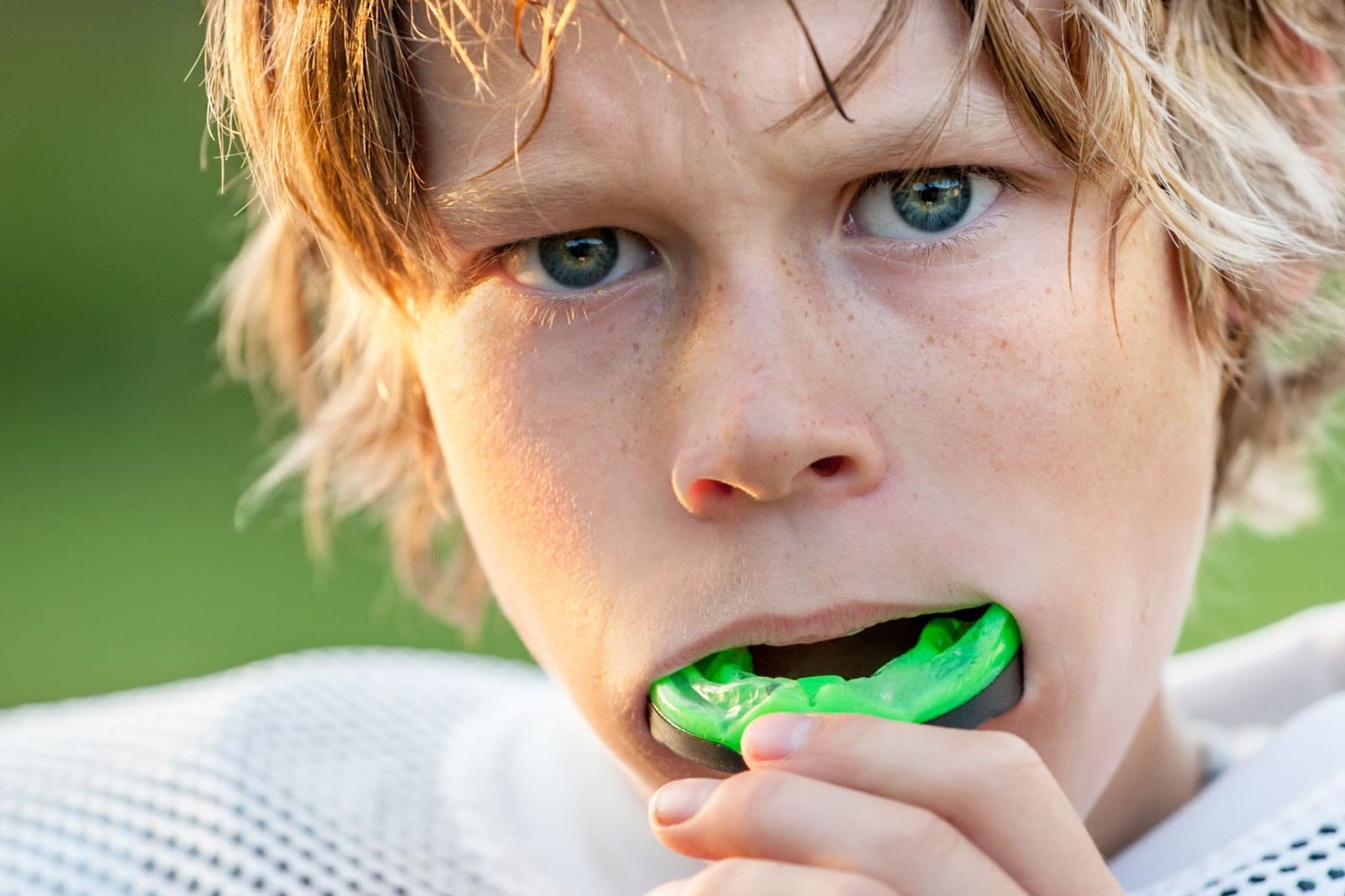If you participate in a contact sport or recreational activity, you should wear a mouthguard to protect your teeth and jaws from injury. It’s also important to know how to clean a mouthguard to keep it in good condition. Sport and active recreation injuries account for nearly 40 per cent of all dental injuries, and the vast majority of these injuries are avoidable or at least minimised with the use of a well-fitting mouthguard.
Mouthguards come in three types: ready-made, “boil-and-bite”, and custom-fitted. Custom-fitted mouthguards offer the best protection as they are made to specifically fit your teeth and bite. The other two types may fit loosely with unprotected gaps that could result in less protection for the teeth and injury.
To keep your mouthguard in the best condition, it’s important to keep it clean. If you’re unsure about how to clean a mouthguard, the following tips will help.
Rinse Immediately After Wearing
As soon as you take it out, rinse your mouthguard with water. This removes any debris and loosens plaque. Take care not to twist or distort your mouthguard while rinsing it, but do be thorough and make sure you have rinsed your mouthguard well.
Brush the Mouthguard with a Toothbrush
After rinsing your mouthguard or when you get home from sport, use a toothbrush to gently clean the inside and outside, paying special attention to any tight folds or crevices. After you thoroughly brush your mouthguard, rinse it briefly with luke warm water.
Lay the Mouthguard on a Clean Surface and Allow It To Dry Completely
Let any excess water drain from your mouthguard by turning it over and gently shaking it. It’s important that your mouthguard is completely dry before you store, especially if your mouthguard case has no air holes in it, to prevent bacterial growth. If needed, place your mouthguard carefully on a clean, dry, flat surface and leave it there until it dries (this should take around 30 minutes).
Always Store Your Mouthguard in a Case
To prevent your mouthguard from being damaged or distorted, always be sure to store it in a case that fits without any bending or twisting. Ideally, the case should have small air holes to allow any excess moisture to evaporate.
It is also best to store your mouthguard out of direct sunlight or where there is variation in temperature like the bathroom, as heat and moisture can damage your mouthguard or nightguard over time.
Keep Your Case Clean
Just as it’s important to clean your mouthguard, it’s important to keep the case you store it in clean. Rinse the case with warm water whenever not in use, and allow it to dry thoroughly before putting it away.
How to Clean a Mouthguard Monthly
To be sure your mouthguard stays as clean as possible, it’s important to give it a deeper clean once a month or so to remove any stubborn plaque or bacteria. Cleansing baths can help remove debris and bacteria from your mouthguard, especially in hard to clean areas.
What To Use To Clean a Mouthguard
You may wish to use a separate toothbrush rather than the one you use to clean your teeth, so you can keep it with your mouthguard for easy cleaning. Always use a toothbrush with soft bristles, and brush in gentle circles, taking care to not use too much pressure. You will also want to avoid any harsh or abrasive cleaners which might damage your mouthguard and reduce its normal lifespan.
Toothpaste
Toothpaste can differ quite a bit from brand to brand. While no toothpaste is completely non-abrasive, it’s important to choose one that’s as gentle as possible, as abrasive toothpaste can scratch or put your mouthguard or nightguard. Generally, toothpastes for sensitive teeth can be more suitable, but be sure to brush gently and rinse thoroughly.
Soap and Water
Rinse your mouthguard or nightguard in cool water and apply a small amount of non-abrasive soap. Gently brush your mouthguard until soapy, then rinse thoroughly and let dry before storing it in a case.
Mouthwash
Place your mouthguard in a bowl and pour a capful of mouthwash directly over it. If it isn’t completely submerged, add water until it’s entirely covered. Brush it gently for about a minute.r. Rinse and let dry.
Why You Should Clean Your Mouthguard
Without regular cleaning, your mouthguard can become discoloured by naturally occurring plaque. If this plaque isn’t removed, it can build up and give your mouthguard an unpleasant taste and smell. Over time, the build-up can even damage your mouthguard enough to require replacement.
Summary
Get the most out of your mouthguard with regular cleaning after each use. By following the above guidelines and learning how to clean your mouthguard, you can help extend its life so it can keep protecting your teeth and gums from injury. Book an appointment at Beaches Dental today to be assessed for a mouthguard. If required, we can have one custom moulded for your purposes.

